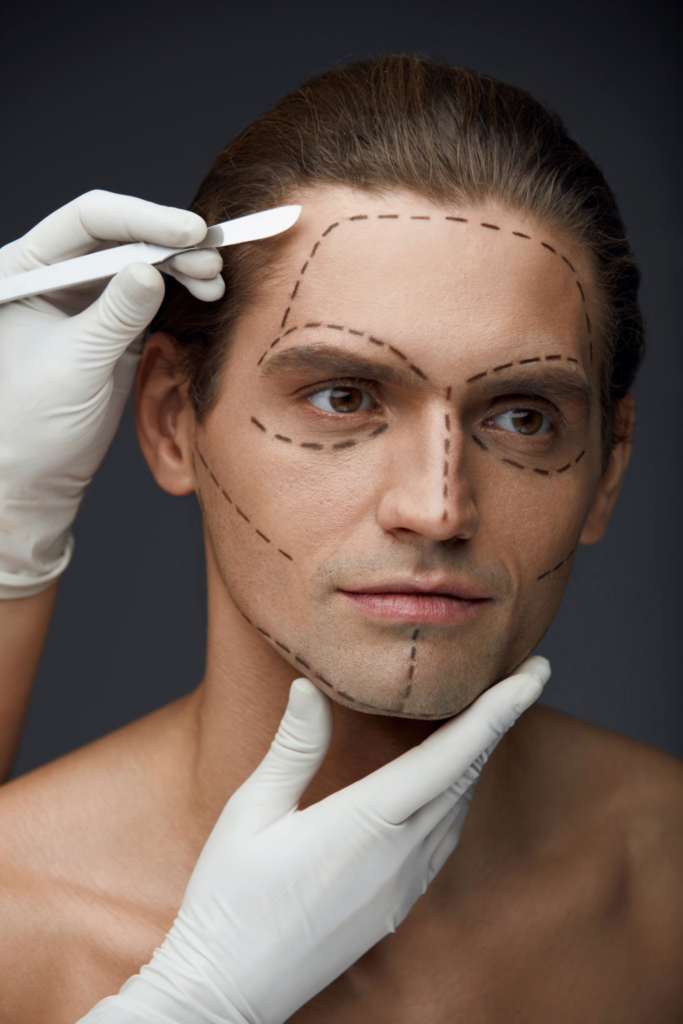Facial masculinization is a complex field encompassing various surgical and non-surgical techniques aimed at altering facial features to achieve a more masculine appearance. The permanence of these results, however, is not uniform and depends heavily on the chosen method, individual patient factors, and post-operative care. This article will dissect the permanence of facial masculinization procedures, examining both surgical and non-surgical approaches and their implications for long-term outcomes.

Table of Contents
Defining Facial Masculinization Procedures
Facial masculinization encompasses a range of procedures designed to enhance typically masculine facial features. These procedures aim to create a more angular jawline, a stronger brow ridge, a more prominent chin, and a reduction in the overall roundness of the face. Specific techniques can target individual features, such as rhinoplasty to reshape the nose, or a combination of procedures for a more comprehensive transformation. The precise goals and the extent of the transformation are determined collaboratively between the patient and the surgeon, requiring careful consideration of individual anatomy and desired aesthetic outcomes.
The scope of these procedures can vary significantly, from subtle adjustments to more extensive reshaping. Understanding the specific techniques involved and their potential impact on facial structure is crucial for patients seeking masculinization. A thorough consultation with a qualified and experienced surgeon is essential to establish realistic expectations and to assess the suitability of various procedures for the individual patient’s anatomy and desired outcome. This collaborative approach ensures a safe and effective procedure aligned with the patient’s goals.
Finally, it’s crucial to distinguish between the different types of masculinization procedures available. Some focus on bone structure (e.g., jaw augmentation, reduction of the chin), while others address soft tissue (e.g., fillers, implants). This distinction is paramount when considering the permanence of the results, as bone-based procedures tend to offer more lasting changes than those involving soft tissues.

Surgical Techniques and Their Permanence
Surgical techniques for facial masculinization, such as jawline contouring (including mandibular angle augmentation and reduction), chin augmentation (using implants or bone grafts), and forehead reshaping (brow bone augmentation), generally provide more permanent results compared to non-surgical options. The changes made to the underlying bone structure are relatively stable over time. However, even with surgical procedures, some degree of subtle change can occur due to natural aging processes.
The permanence of surgical results is heavily dependent on the skill of the surgeon and the proper healing process. Precise surgical technique minimizes the risk of complications that could affect the longevity of the outcome. Careful planning and execution are crucial to ensure the desired aesthetic outcome is achieved and maintained. Additionally, post-operative care, including adherence to the surgeon’s instructions, significantly contributes to the long-term stability of the results.
While bone grafts and implants are intended to be permanent, minor resorption (bone loss) can occur over time, albeit usually minimally. Similarly, soft tissue changes associated with aging can subtly alter the overall appearance, even if the underlying bone structure remains largely unchanged. Therefore, while surgical facial masculinization offers a higher degree of permanence, it’s not entirely static and will be influenced by natural aging processes.
Non-Surgical Methods: Reversibility Factors
Non-surgical methods for facial masculinization, such as fillers (e.g., hyaluronic acid) and Botox, offer temporary results. Fillers are injected to add volume to specific areas, while Botox temporarily weakens muscles to reduce wrinkles and create a more defined jawline. The duration of these effects varies depending on the type of filler or Botox used and the individual’s metabolism.
The reversibility is a key advantage of non-surgical methods. Fillers are generally biodegradable and will be gradually absorbed by the body over time, typically ranging from several months to a year or more, depending on the product. Botox effects typically wear off within three to six months, requiring repeat injections to maintain the desired outcome. This reversibility allows for adjustments and corrections if the patient is dissatisfied with the initial results.
This temporary nature contrasts sharply with surgical techniques. The ease of reversing non-surgical procedures makes them suitable for patients who are unsure about committing to permanent changes or who wish to experiment with different looks before deciding on more definitive surgical interventions. However, the temporary nature also necessitates repeat treatments to maintain the desired effect, representing a higher ongoing financial commitment compared to surgical options.
Long-Term Effects and Tissue Response
Long-term effects of facial masculinization procedures are influenced by several factors, including individual tissue response, aging processes, and the chosen technique. Surgical procedures generally yield more lasting results, but even these can be subtly affected by the natural aging process, which causes bone resorption and changes in skin elasticity. The extent of these changes varies from person to person.
Tissue response to surgical procedures, such as inflammation and scarring, can also influence the long-term outcome. Minimizing surgical trauma through precise techniques and proper post-operative care helps to optimize tissue healing and reduce the risk of complications that could affect the long-term result. Individual variations in healing capacity also play a role in the final outcome.
For non-surgical methods, the long-term effects are primarily determined by the rate of filler absorption and the ongoing need for repeat injections. Prolonged use of fillers can, in rare instances, lead to complications such as granuloma formation or skin changes. Regular monitoring and professional consultation are crucial for managing potential long-term effects and addressing any complications that may arise.
Factors Influencing Result Longevity
Several factors can influence the longevity of results from facial masculinization procedures. These include the patient’s age, genetics, lifestyle, and overall health. Younger patients tend to experience more stable results, while older individuals may see more pronounced changes due to accelerated aging processes. Genetic predisposition to bone resorption or skin laxity can also affect the long-term outcome.
Lifestyle choices, such as sun exposure, smoking, and diet, can also impact the longevity of results. Sun exposure can accelerate skin aging, potentially affecting the appearance of the treated areas. Smoking can impair tissue healing and increase the risk of complications. A healthy lifestyle, including a balanced diet and adequate hydration, contributes to optimal tissue health and can help maintain the results of the procedure for longer.
Finally, the skill and experience of the surgeon are paramount. A skilled surgeon can optimize the results by using precise techniques and minimizing surgical trauma, leading to better healing and more stable outcomes. Choosing a qualified and experienced surgeon is crucial for maximizing the longevity and aesthetic quality of the results.
Managing and Revising Outcomes
Even with careful planning and execution, some degree of revision or adjustment may be necessary to maintain or refine the desired aesthetic outcome. For surgical procedures, revisions may be required to address minor asymmetries or to correct unexpected changes due to bone resorption or tissue remodeling. These revisions are typically less extensive than the initial procedure.
For non-surgical methods, revisions are more readily achievable through additional filler injections or Botox treatments. The temporary nature of these procedures allows for adjustments as the patient’s needs and preferences evolve over time. Regular follow-up appointments are recommended to monitor the results and address any concerns.
Maintaining realistic expectations is crucial. Facial masculinization, regardless of the chosen method, is not a static process. The aging process and individual variations in tissue response will inevitably lead to some changes over time. Regular consultations with the surgeon are essential for managing long-term outcomes and addressing any necessary revisions or adjustments.
The permanence of facial masculinization varies significantly depending on the chosen technique. Surgical methods generally offer more lasting results due to alterations in bone structure, although natural aging processes will still have an impact. Non-surgical approaches provide temporary results, allowing for greater flexibility but requiring repeat treatments. A thorough understanding of these factors, coupled with realistic expectations and careful selection of a qualified surgeon, is essential for achieving and maintaining the desired aesthetic outcome.
Visit Dr.MFO Instagram profile to see real patient transformations! Get a glimpse of the incredible results achieved through facial feminization surgery and other procedures. The profile showcases before-and-after photos that highlight Dr. MFO’s expertise and artistic vision in creating natural-looking, beautiful outcomes.
Ready to take the next step in your journey? Schedule a free consultation with Dr. MFO today. During the consultation, you can discuss your goals, ask any questions you may have, and learn more about how Dr. MFO can help you achieve your desired look. Don’t hesitate to take advantage of this free opportunity to explore your options and see if Dr. MFO is the right fit for you.









